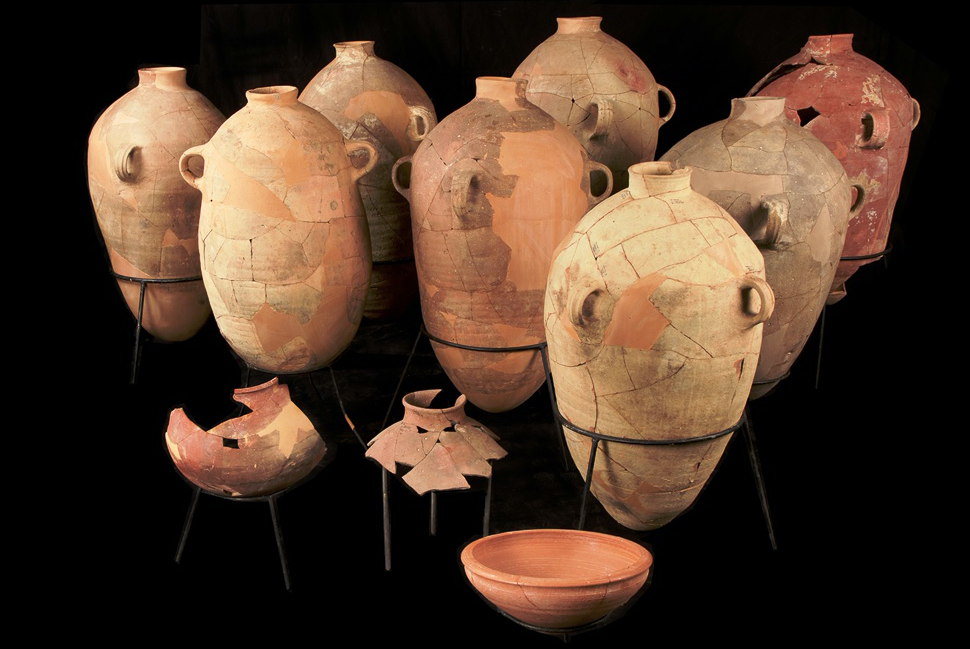Jerusalem, 30 March, 2022 (TPS) — Researchers from Tel Aviv University and the Israel Antiquities Authority (IAA) who examined jars unearthed during excavations in the City of David in Jerusalem’s Old City were surprised to find remnants of the exotic spice from 2,600 years ago.
The wine jars from the end of the First Temple Period, bearing the symbol of trade from the Kingdom of Judah, contained remnants of vanilla spice – a luxurious spice that came to Israel from afar.
The wine jars, dating to the days of King Zedekiah and the end of the glory days of the kingdom, were discovered inside storage rooms of buildings in two different archeological excavations in the City of David. One excavation is located on the eastern slopes of the City of David, and another excavation was conducted in the Givati ??Parking Lot, west of the hill.
The two buildings unearthed in the excavations were destroyed in the Babylonian destruction of Jerusalem in 586 BCE, and the jars were discovered smashed inside the rooms, under a collapsed building.
The new study used unique chemical tests to analyze the contents of the jars and identified remnants of molecules that have been preserved in the tiny spaces on the side of the pottery vessel.
The study examined eight jars from both buildings, and in all of them, clear evidence was found for wine storage.
What really surprised the researchers, however, were organic residues, which indicate that the wine was enriched with vanilla – an exotic and expensive spice, which until recently, was not at all known to be available to the Old World before the arrival of Columbus.
The remains of the contents of the jars were identified by Ayala Amir, a doctoral student in the Department of Archeology and Ancient Near Eastern Cultures at Tel Aviv University, who conducted the research in the laboratories at the Weizmann Institute and Bar-Ilan University.
“Vanilla markers are an unusual find, especially in light of the fire that occurred in the buildings where the jars were found. The results of the analysis of the organic residues allow me to say with confidence that the jars contained wine and that it was seasoned with vanilla,” she said.
The discovery of vanilla is apparently related to an international trade route that crossed the Negev during the 7th century BCE, initially under the auspices of the Assyrian Empire, and later, probably under their heirs, the Egyptians, and possibly even the Babylonians.
Ortal Chalaf and Dr. Joe Uziel, the Directors of the Excavation on behalf of the IAA who uncovered the group of jars on the eastern slopes of the City of David Hill, said that “the opportunity to combine innovative scientific studies examining the contents of jars opened a window for us, to find out what they ate – and in this case – what they drank in Jerusalem, on the eve of the destruction.”
The excavation of Prof. Yuval Gadot and Dr. Yiftah Shalev in the Givati ??Parking Lot in the City of David revealed a second set of jars, where an impressive two-story surviving building was uncovered – which may have served as a bureau of senior officials in the kingdom. The easternmost room on the ground floor was probably used as the wine cellar of the building. More than 15 jars were found in it, as well as several other vessels for storing liquids, one of them huge.
“The room was so crowded that it was hard to understand how people could move inside it,” the researchers say.
Some of the handles of the jars beard a seal impression in the shape of a rosette, indicating that the jar and its contents were part of the royal administration of the Kingdom of Judah. The number of jars and impressions on them indicate the economic importance of wine, and the drinking culture as a tool for expressing status and power. On the importance of the wine-drinking ceremony in the local culture, one can learn from the rebuke of the prophet Amos about “the complacent in Zion … You lie on beds adorned with ivory and lounge on your couches…. You drink wine by the bowlful” (Amos 6: 1-7).
Social events and ceremonies combining wine drinking were also common in many other cultures. Evidence of them can be found, for example, in the Greek symposium ceremonies, or in the Eastern empires, such as the Ahasuerus feast, mentioned in the Book of Esther.
Examination of the contents of the jars revealed that some of them had been reused several times since in some of them remnants of olive oil molecules were also discovered. These findings indicate the complexity of the economic system and the advanced mechanism for collection and redistribution.
Prof. Gadot and Dr. Shalev noted that “to date, we have not had direct evidence of the use made of such jars. Some suggested wine or olive oil, but there was no direct evidence of the vessels themselves. Molecular analysis now allows us to expand the boundaries of knowledge and imagination. Now, we begin to piece together the jar puzzle. The wine, perhaps, is not a big surprise, but the fact that it is seasoned with vanilla is amazing.”
